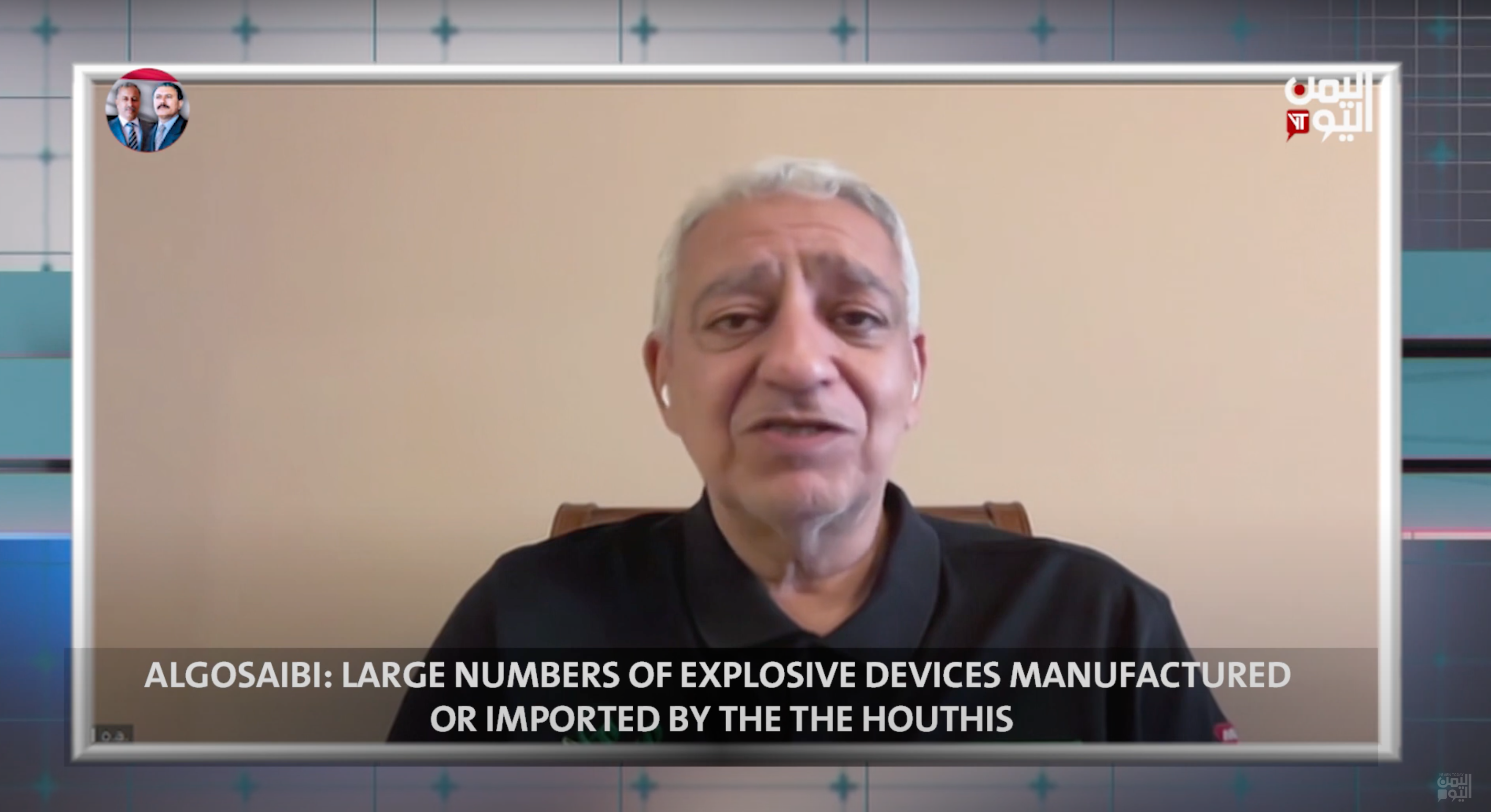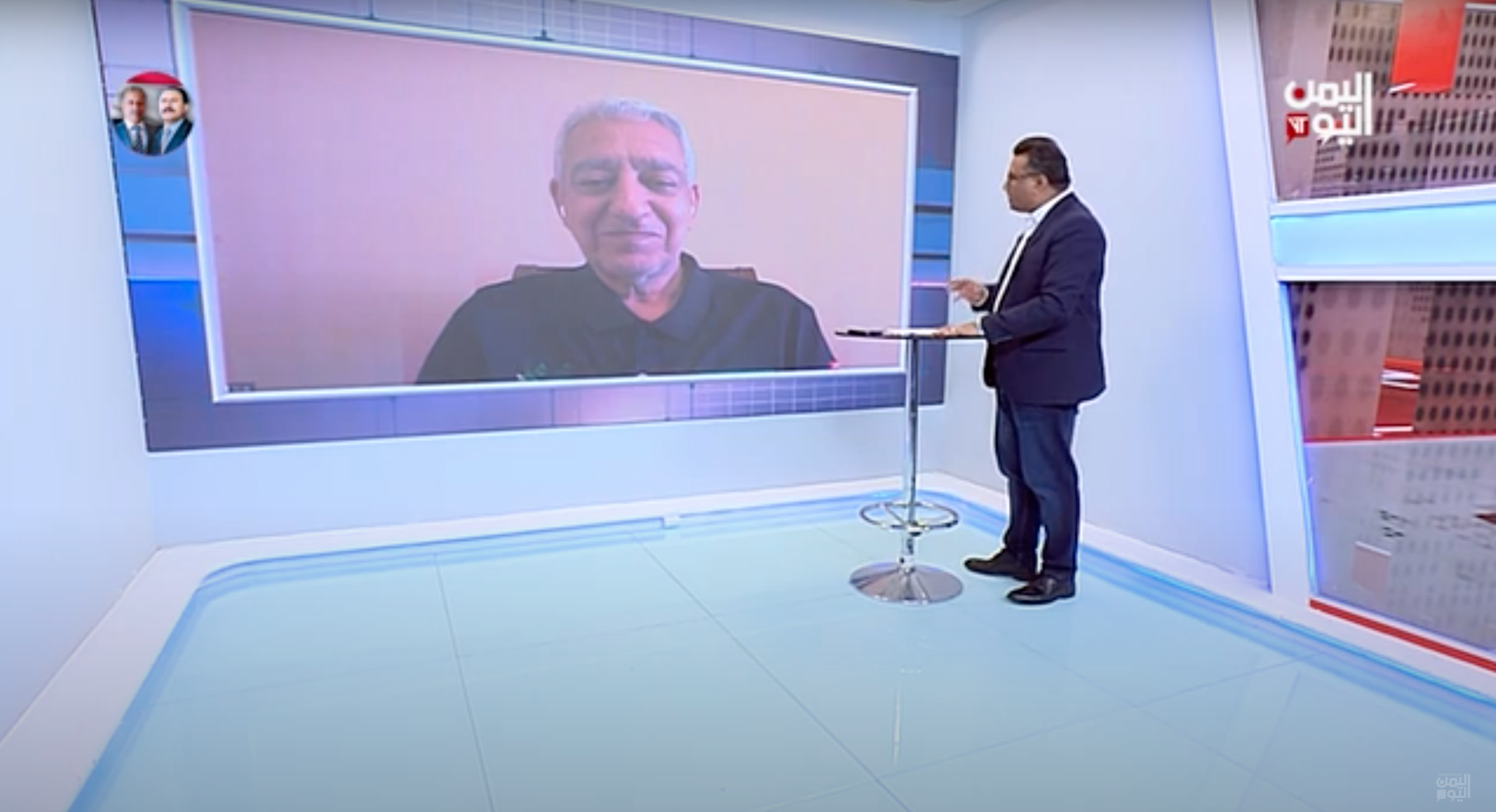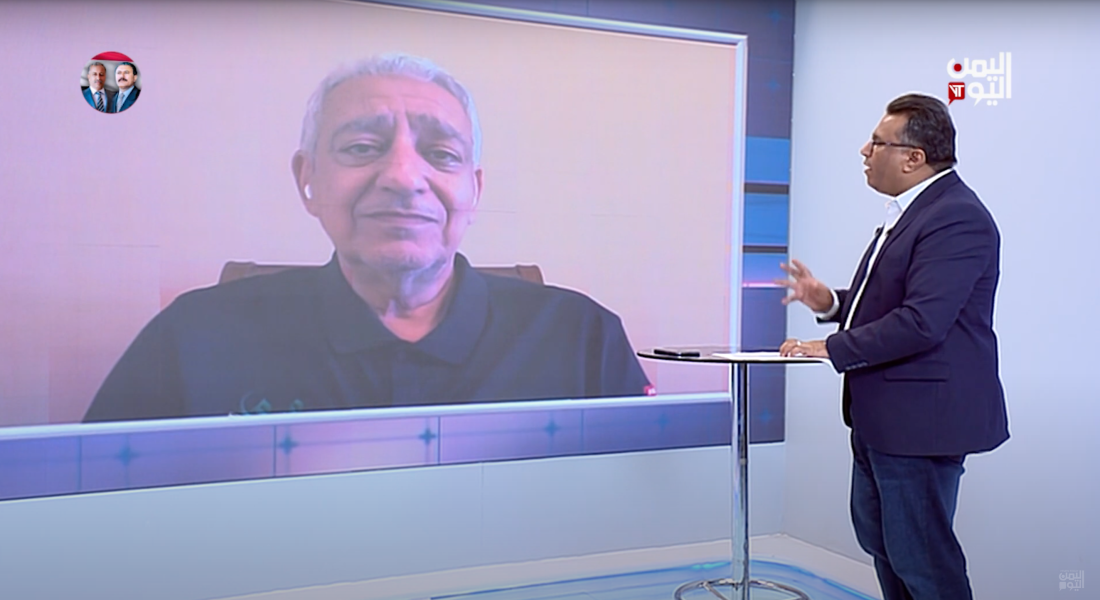In an interview with TV Channel Yemen Today, Project Masam’s Managing Director Ousama Algosaibi has said that peace talks between warring parties in the Yemen war could prove beneficial if the Houthis agree to hand over maps and information pertaining to minefields planted across the country.
In an effort to help Yemen deal with the threat of remnants of war and allow the country to rebuild again, Project Masam was launched in mid-2018 as part of an initiative between Saudi Arabia and the Yemeni authorities.
“Yemen has had a landmine problem for a long time and Yemen is a signatory on the Mine Ban Treaty agreement. But the problem today is different,” Algosaibi, who has contributed to demining projects in South Lebanon in 2001 and 2006, told Hassan Omar, presenter of The Third Dimension programme.
A new explosive threat
Before the Houthis rebels took over Yemen, all the mines in Yemen were identified and known, according to the mine action expert.
“Today, 80% to 85% of what we clear – the mines, rockmines and improvised explosive devices – is [linked] to Al Houthi, manufactured by Al Houthi and locally made with technology imported from outside Yemen.
“It is no longer the same issue it used to be: it is a totally new threat. It’s a very large number of improvised explosive devices that have been manufactured by Al Houthi, that are very advanced using technology that was imported from outside Yemen or smuggled from outside Yemen.
“The anti-tank and anti-personnel mines that we are finding in Yemen are all Al Houthi manufactured – they are no longer the old mines that were existing in Yemen prior to this war.”
In Algosaibi’s opinion, it is near impossible to put a figure on how long it would take for Yemen for be declared mine-free.
“Until peace takes place in Yemen, until the information about mines actually becomes available for people to start working on, I think it’ll take many, many years to come before Yemen becomes free of mines.”
Plague extends to large parts of Yemen
According to Algosaibi, a leading figure of the forefront of international mine action since 1991, Yemen today can be classified in different zones.
“Al Jawf used to be very highly contaminated. Taiz is extremely contaminated, the West Coast is highly contaminated. Areas that have been liberated recently are also highly contaminated. But you cannot say that one area has more contamination than another, because we are finding [items] on a daily basis in most of the areas.”
Elswhere, Shabwah, Bayhan and Usaylan were nearly declared free from mines after working for three continuous years in these areas.
“After Al Houthi [re-]entered Shabwah and before they were [driven] out of Shabwah again and we went back in, the number of landmines we found in the first three months of work was more than everything we had found in the past three years.”
“The Houthi has the capacity of manufacturing and the capacity of laying mines extremely fast. We have found bigger mines in Shabwah than we have ever seen before in Yemen. We have never seen that before.”
He added: “The problem is that we don’t know what is in the land and in the areas that are still controlled by Al Houthi – parts of Shabwah are still controlled by the Houthis and we have no idea what has been planted in there.
In the West Coast, in Taiz and other liberated areas, Project Masam’s deminers continue to find mines and explosive devices on a daily basis.
“I have always given a figure between one and two million mines or explosive devices planted in Yemen, but this figure is based on what we are finding and what we hear from other players in the field are finding. Nobody will know the exact number until the last mine is cleared in Yemen.”
Yemen’s unique landmine situation
Asked whether an analogy could be drawn between South Lebanon and Yemen, Algosaibi explained South Lebanon was under Israeli control for over 20 years when landmines were planted.
After the Israelis withdrew from South Lebanon, they handed over the files that contained information, grid references, descriptions of minefields that they had planted in South Lebanon to the United Nations, which handed it over to the project Algosaibi was coordinating so they could work using that information.
“The minefields in Lebanon were mostly anti-personnel mines (the Israeli Number 4 mines), their minefields were fenced, there were warning signs on those fences, so the work was different. It was military-style mines that were laid over there, in military pattern that is easier to work with: they were not randomly spread all over the place.
“In Yemen, there are no maps, no information, absolutely no one in Yemen has seen a map or coordinates of minefields or fenced minefields or a warning sign of a minefield that Al Houthi have planted in Yemen.
“So, there is a big difference between South Lebanon and Yemen today.”

Impact of peace talks on mine action
Following the Saudi-Iranian rapprochement, and the direct Houthi-Saudi talks, Omar asked Algosaibi whether a political peace deal agreement would have an impact on mine action in Yemen.
“I think it is a great plus to have a proper talk with the Iranian side,” the managing director replied, referring to Iran’s alleged financial, military and technological support to the Houthis.
“I am non-political but I talk from our own interest. I hope that these talks, this coordination and agreements between the two countries will one day lead to Al Houthi actually handing over the information that has to do with mine and improvised explosive devices that they have manufactured and planted in Yemen.”
“Nothing has been done so far. The Houthis have signed the Stockholm Agreement and they talked about handing over information about mines but that still hasn’t happened either.”
International community needs to act
Highlighting the local and global collective responsibility of the actors in the Yemen war as well as the international community, Algosaibi claimed not enough has been done to stop the planting of landmines and nothing has been done to hold accountable those responsible for these human rights abuses.
“I am against the use of mines against civilians anywhere in the world. Anti-personnel mines are a deadly silent weapon that will sit in the ground for tens of years until somebody walks over it, and it will detonate.
“Turning anti-tank mines into anti-personnel mines using pressure plates is an act of terrorism against civilians, whether it is in Yemen or anywhere else in the world.”
He added: “The use of rockmines is a terrorist organisation’s item and methodology used before by ISIS, Al Qaeda in Iraq, Syria and other parts of the world.
“Those items are basically targeting civilians. No civilian should be targeted. I don’t have an issue if you are defending a position on a military front, but when I find mines in schools, in farmlands, inside homes and the doorsteps of mosques, in grazing areas, who is the target there? Those are not military targets. Those are civilian targets and the whole world should condemn this.
“No innocent civilian should be faced by such a threat. I consider this as terrorism to control civilians, to access areas because civilians aren’t able to go back to their villages or their homes.
“There is no justification for the use of such items.”
Military vs. humanitarian landmine clearance
Describing the difference between military landmine clearance and humanitarian landmine clearance, Algosaibi said military clearance, also known as breaching, entails opening a safe road from point A to point B, disregarding any mines on the right or left of the road.
“The way operations take place is different, and the aim of the project is different when you talk about humanitarian mine action.
“[Project] Masam is a humanitarian project under the King Salman Humanitarian Aid and Relief Centre. Our purpose? We only work in liberated areas away from active fronts in Yemen. We work in villages, farming and grazing land, away from frontlines.”
In contrast, under humanitarian landmine clearance, deminers enter an area to totally secure it by removing every single threat on that land.
The history behind Project Masam
The idea of the Project Masam initiative developed in October 2017, and the project was born after extensive discussions between Saudi Arabia and Yemeni authorities. Its aim was to rapidly decrease the number of casualties that were already happening on a daily basis throughout Yemen.
Project Masam was launched to ensure that all men, women and children were no longer facing death or amputations from landmines, improvised devices and other unexploded ordnance.
So far since June 2018, Project Masam has cleared 417,833 remnants of war – figures verified and authenticated by the national authority in Yemen, the Mine Action Coordination Centre.
The project is made up of 32 local Yemeni demining teams in collaboration with the Mine Action Programme in Yemen. Project Masam has re-trained, re-equipped, insured and are supervising and mentoring the demining teams in Yemen. All training is conducted in Yemen, in Project Masam’s headquarters in Aden and Marib.


